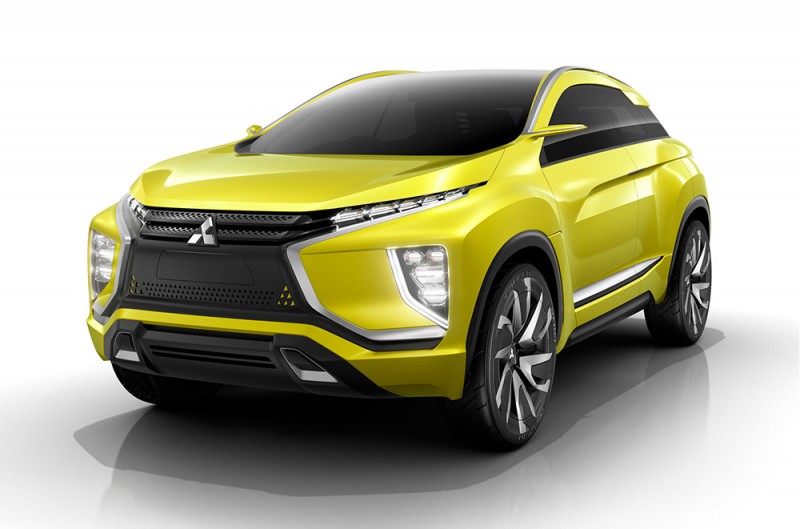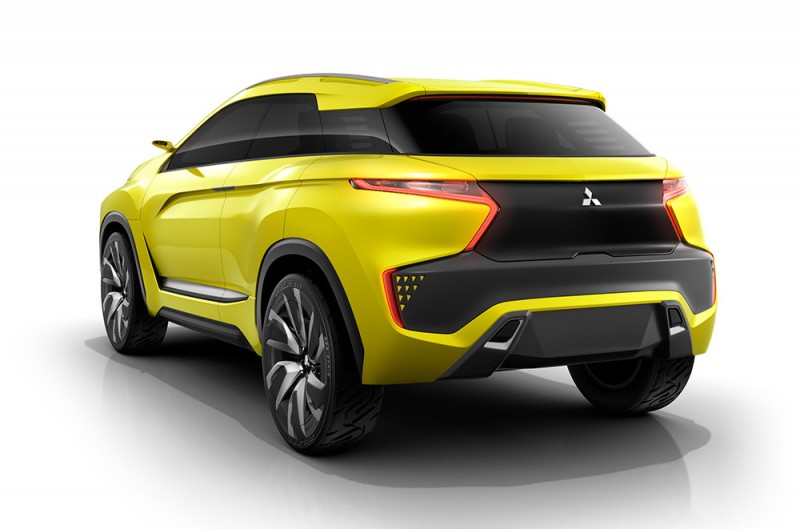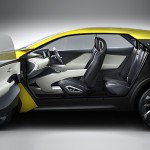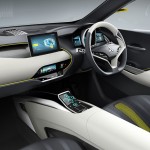Following the widely publicised official reveal of the Tesla Model X, Mitsubishi are perhaps a surprising manufacturer to have come up with a near competitor, albeit a smaller crossover vehicle than a full blown SUV like the Model X.
With the current diesel crisis spear headed by VAG (Volkswagen Audi Group), electric and hybrid cars powered by petrol are likely to be the solution car makers look towards to regain customer confidence. Electric power is a great way to do this and Mitsubishi’s sales of their plug-in hybrid Outlander PHEV have proven to the company internally, that they can also be very well received – if priced correctly.
In case you’re wondering, no it doesn’t sport fancy eagle wings, although the rear doors are akin to BMW’s i3, opening with a rear hinge.
The headline news is that Mitsubishi’s latest eX (Electric Crossover) Concept to be shown at the 2015 Tokyo Motor Show is wholly electric and can travel a useful 400 km (248 miles)* to one charge of its substantial 45 kWh lithium-ion battery.
The Mitsubishi eX Concept’s styling is rugged and aggressive yet purposeful too, with just a slight hint of Lexus about its front end crossed with a Range Rover Evoque. Aside from the aforementioned doors, there are reminders of BMW’s i3 at the rear windows and C-pillars too, but overall the appearance is pleasantly Mitsubishi and striking.
In typical concept fare, the eX Concept features a raft of ideas that although perhaps promising and even innovative, are likely more for show than purpose. This includes rubber used on the bumper areas for better ‘bumping’ up against obstacles or in the event of accidents and different colour schemes between the passenger and driver side of the interior. Similarly, the dashboard houses two stow-away portable batteries, that can be removed and used for other outdoor pursuits and support, ‘active lifestyles’. Aside from this, the cabin is remarkably non-concept like for a relatively radical concept car and could easily be imagined as a production model given a few years development. Seating is provided for five and, if the renderings are anything to go by, there appears to be plenty of space inside the airy looking interior.
The windscreen features an augmented reality screen, used to display driving information and is linked to an information network using connected car tech. The idea of this is to reduce the amount a driver has to glance away from the road to see information and so should be less distracting – once gotten used to of course.
You may have noticed the teeny-tiny wing mirrors on the side of the car, which are no rendering mistake. Instead, Mitsubishi have followed down the oft-ventured path of using cameras instead of mirrors, to reduce exterior drag and improve cabin wind noise. The Side View Monitors are located at each side of the main instrument housing, rather than being positioned to each side of the car as is the usual convention. Again, the idea is to minimise the amount the driver must glance around the cabin. Similarly, the rear view mirror has been replaced by another monitor that provides a wider angle than is possible using a conventional mirror, making rear visibility safer.
The electric drive components are likely to be borrowed from Mitsubishi’s popular Outlander PHEV, albeit without the petrol lump in the front to weigh things down. Mitsubishi have confirmed the eX Concept has twin motors and is four wheel drive with a maximum output of 70kW at both front and rear, or about 187 bhp total.
The Twin Motor 4WD system incorporates S-AWC (Super All Wheel Control), that integrates a vehicle dynamics system, using braking to control the front wheels and a transfer mechanism AYC (Active Yaw Control) that varies torque split between the rear wheels. This helps ensure the car responds in the expected manner the driver wishes, with near instant response. Cameras are used to scan the road and communicate the data with sensors so road and surface conditions can be monitored. Three different modes can be selected, including AUTO, GRAVEL and SNOW.
The eX Concept can also be used as a V2H device (Vehicle to Home), that allows energy stored in the battery to supply enough electricity to power domestive appliances in an average home for up to four days. A 1,500W 100V AC socket also allows the battery to power home electric appliances when enjoying outdoor pursuits.
The eX Concept will be shown alongside a special edition i-MiEV celebrating 50 years of Mitsubishi’s EVs and the latest incarnation of the ever-popular Mitsubishi Outlander PHEV (plug-in hybrid).
*Range is based on the Japanese JC08 testing standard. See Mitsubishi eX Concept car for further details.




